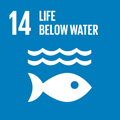- Docente: Laura Govoni
- Credits: 9
- SSD: ICAR/07
- Language: English
- Moduli: Laura Govoni (Modulo 1) Laura Govoni (Modulo 2) Laura Govoni (Modulo 3)
- Teaching Mode: Blended Learning (Modulo 1); Blended Learning (Modulo 2); Blended Learning (Modulo 3)
- Campus: Ravenna
- Corso: Second cycle degree programme (LM) in Offshore Engineering (cod. 9249)
Learning outcomes
Aim of the course is to provide students with the ability to apply their knowledge and experience of soil mechanics and geotechnical engineering to offshore developments. In particular, the course covers the geotechnical properties of seabed sediments, the offshore site investigation procedures together with the traditional and advanced approaches for the design of a wide range of offshore foundations.
Course contents
The course builds on student's previous knowledge of soil mechanics and addresses the geotechnical engineering aspects of the design of offshore structures with application to oil and gas and wind turbine developments. The course is organised in three modules as follows.
Introduction. Short history of offshore developments in Italy and worldwide. Overview of offshore structure and foundation types. Features of the offshore environment: met-ocean data, sediments and hydrodynamic regimes.
Behaviour of a soil element. Summary of fundamentals: compression and shear. Cyclic loading: essential features, laboratory modelling of cyclic loading, cyclic resistance curves, failure and deformations under cyclic loading.
Site investigation. Overview on investigation systems. Sampling. Penetration tests: cone (CPT), T-bar and ball penetrometers: equipment, procedures and data interpretation.
Design of piles. Overview. Essential features of driven steel piles: plugging, friction fatigue. Resistance to driving. Axial and lateral capacity of driven piles in clay and sand. Axial and lateral response of driven piles: load-transfer curves in clay and sand.
Design of shallow foundations. Overview. Shallow foundations types. Features of installation methods. Classical bearing capacity theory: uniaxial and general loading conditions. Interaction diagrams. Shallow foundations load-displacement response under general loading conditions.
Design of anchor foundations. Overview. Anchor and mooring types. Installation features. Estimate of anchors capacity under combined loading.
Design principles according to American Petroleum Institute (API), International Standard Organisation (ISO) and Det Norske Veritas (DNV).
L'insegnamento partecipa al progetto di sperimentazione didattica dell'Ateneo/The course participates in the University's teaching experimentation project.
Readings/Bibliography
Mark Randolph and Susan Gourvenec, Offshore geotechnical engineering, Spon, 2011
Subhamoy Bhattacharya, Design of foundations for offshore wind turbines, Wiley, 2017
William Powrie, Soil Mechanics: Concepts and Applications, Spon, 2004Teaching methods
Lectures are organised as follows.
Theory: through slides, videos and at the board;
Worked examples: direct application of theory, typically at the board, with students active involvment.
A workshop is delivered on the design of offshroe foundations (module II) for wind turbines by Aligi Foglia of Fraunhofer IWES (GER). The work will be held at the begininnig of second cycle and entirely taught online.
Assessment methods
The assessment is a written exam, open books and concerns solving some worked examples.
Note: a part of the written exam can be also taken at the end of the first cycle. Dates are set within the winter exam period.
The exam evaluation will be registered not before the end of the course.
Teaching tools
The course makes mostly use of slides.
Office hours
See the website of Laura Govoni
SDGs


This teaching activity contributes to the achievement of the Sustainable Development Goals of the UN 2030 Agenda.
